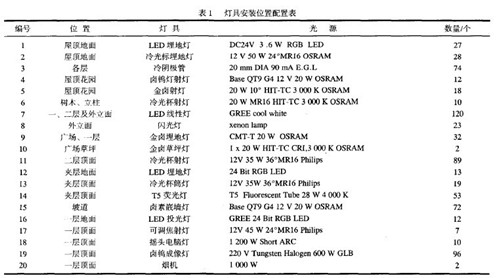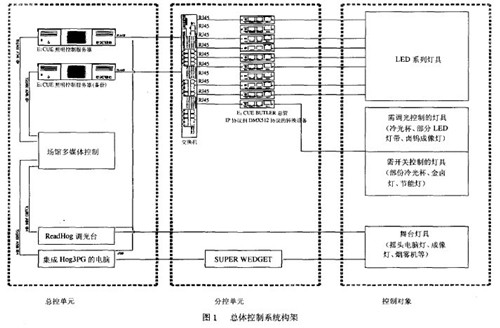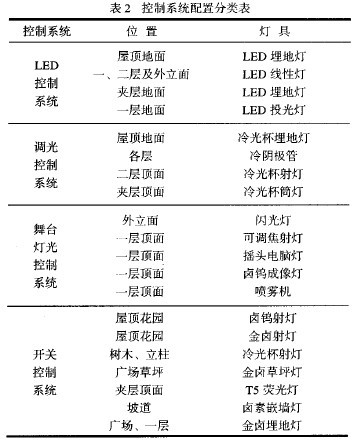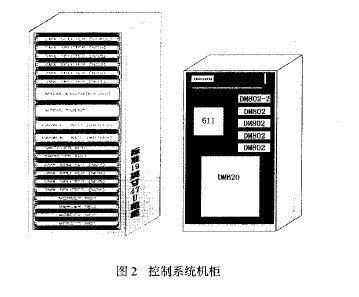1 DMX Control Protocol Brief
In order to make the consoles and dimmers produced by various manufacturers connect to each other and create an excellent stage effect, the South American Association of Theatre Technology (USITT) was first developed and developed into a standard digital interface control dimmer for consoles in 1986. Way DMX512 protocol.
Later, this agreement was responded to by lighting manufacturers from all over the world, and gradually extended to stage lighting fixtures, which became the basis of digital lighting system application. Now we are using the DMX protocol for the DMX512/1990 version. At present, domestic large and medium-sized studios, professional lighting equipment for large and small stage such as computer lighting console, computer light console, digital silicon box, computer lights, computer color changing lamps, chasing lights, lasers, etc., most of them use DMX512 Protocol transmission. Due to its flexible and convenient control, the current LED full color color lighting control system also widely adopts the DMX512 protocol, and has rapidly become a common control technology on the LED control system.
2 Singapore Pavilion Architectural Design and Lighting Design Concept
Inspired by the design of the Singapore Pavilion at the 2010 Shanghai World Expo, it is a music box that is being opened. Every visitor is like a person who enjoys this music box. With the in-depth and meticulous visits, a group of Singapore city symphonies will be in front of you.
The lighting design of the Singapore Pavilion also adheres to the concept of architectural design, mainly through the understanding of architectural concepts, the integration of people and nature, the use of light to create light and shadow, reflecting Singaporeans' understanding of civilization, nature, vitality, human rights and love. And embodied in their lives.
3 Requirements for lighting control
In the lighting method: its façade lighting, mainly using high-power LED wall washer and concealed cold cathode tube lighting to gently fit the upper and lower cuts and partial windows of the 'sound box'. The interior of the building is divided into four layers. The first floor is a display and performance area, using a large number of stage lighting fixtures, such as high-powered computer lights, imaging lights, etc., to meet the stage performance: and exhibition. The mezzanine is mainly the office and computer room area, the lighting of this area For regular lighting, the second floor is a closed theater. In addition to the functional lighting required for the film, there are some LED lights, cold cathode tubes, buried lights, etc. to create an environment and atmosphere. Quite a casual and chic area, the organizer places a large number of Singaporean native flowers and plants, tall and different trees, some columns of rattan, etc. The lighting method is the ultimate embodiment of garden lighting. In short, the lighting is Building services, adding light to the concept. Outside square lighting, mainly using buried lights and spotlights with different power sources to illuminate corridors, pavilions, chairs, columns and various types. The concept of plants creating a green garden city.
Such a wide variety of lighting fixtures and different light source types need to be perfectly integrated and synchronized in a master control system. It must also be synchronized with the stage and multimedia to accurately reflect the lighting requirements of each different presentation. Table 1 shows the configuration of the lamps and light sources in different locations.
4 lighting control system architecture
In order to enable a unified and coordinated operation of a wide variety of lighting devices, a highly integrated, highly intelligent system is required to perform all required functions. At the same time, the system also needs to be able to receive other non-illumination sub-preparation instructions. So that the entire system of the museum can work together. This resulted in a highly integrated lighting control system with the following requirements:
1 Control all lighting equipment in the venue. Including traditional tungsten lamp dimming, metal halide switch, cold cathode tube dimming, LED dimming, stage light control, imaging light control and so on. Almost all of the light source categories we use today.
2 Can coordinate with other interventions, be able to receive interventions such as firefighting, multimedia scene requirements, scene performances, etc.
3 Ability to handle a variety of unexpected needs, in special cases of manual direct processing.
4 can achieve high-speed, stable signal transmission.
Due to the existence of such complex control requirements, we have basically determined the following control network components based on the characteristics of the lamps themselves and the characteristics of other related requirements:
â—System 1 person J department control protocol DMX512
â— System external transmission protocol TCP/IP
â—Special situation needs to handle I/O dry contact signal
â— Scene call communication protocol SMPTE / MIDI consol protocol


According to the framework, we have assigned the control system as follows: dimming control system (control tungsten light and cold cathode tube dimming), switch control system (control metal halide lamp and other direct switch equipment), LED control system (control LED light source equipment), stage lighting control system (control imaging lights, computer lights and other stage lighting). The total control system, all control systems, is assigned to a master control management, and a dialogue port is implemented externally for communication and control. Table 2 shows the situation of the system to which the relevant lamps are classified.

(1) Dimming control system
The dimming control system integrates the dimming system and the switching system. Adopting the traditional 485 communication mode, it can realize the switching of tungsten filament lamps, cold cathode tubes, dimming, and direct switching of metal halide lamps and fluorescent tubes. The DMX5 12 protocol is used for communication between the dimming control system and the master control. Achieve one-to-one channel-by-loop one-to-one correspondence control. In this way, in the master control, according to the control standard DMX5 12 device, the programming is directly controlled.
(2) LED control system
The LED lamps in the venue all enter the unified LED control system to achieve integrated control of the same type of lamps. All LED luminaires have built-in DMx512 protocol communication equipment for flexible and dynamic programming control of all LED luminaires using the DMX512 protocol. The LED control system uses German E:CUE control equipment. The main reason is that the communication protocol of the upper layer adopts the Ethernet protocol, which has unique guarantee measures for storage speed, anti-interference and data reliability, and can withstand the overloaded work during the Expo exhibition.
(3) Stage light control system
The stage light control system uses the standard DMX5 12 protocol console. In order to meet the requirements of regular stage performances and II~n, -J- or special events. The computer board Hog3PC system is configured for preset scene playback and the RoadHog large dimming console for the current programming control. The upper end has a Midi protocol interface to be able to accept call commands from the master control system.
(4) Lighting master control system
The lighting master control system is capable of achieving the basic premise of controlling the aforementioned types of lamps, and is also capable of coordinating and coordinating work with weak departments such as audio, video, fountains, monitoring, and firefighting. In particular, it has to test hard communication indicators such as communication interface, stability, and corresponding speed. After screening, we finally selected the German E:CUE master control configuration, which includes hardware and software optimized for lighting control and multimedia engineering services, Ethernet transmission mode, standardized module programming system and super high Stability and scalability are well suited to the demanding requirements of our total control. At the same time, a standby machine is set up, which uses hardware hot backup to ensure that the system runs flawlessly.

The entire system, in accordance with the above configuration, has successfully completed the overall lighting operation and multimedia applications of the Singapore Pavilion.
we design and manufacture Actuator For Dual Axis Azimuth Tracking System, which is widely used for solar system.
U10 and U4 are heavy load Linear Actuator designed for industrial application, especially be used for solar tracking system & heliostat.
The Solar Tracker Linear Actuator is a heavy load linear actuator designed for industrial application, especially be used for solar racking system. U10 is a robust and powerful actuator, designed for heavy-duty applications in harsh environments like solar tracker. It features high load capability, long lifetime and low power consumption.
Actuator For Dual Axis Azimuth Tracking System
Electric Linear Actuator For Dual Axis Azimuth Tracking System,Linear Actuator For Dual Axis Azimuth Tracking System
TOMUU (DONGGUAN) ACTUATOR TECHNOLOGY CO., LTD. , http://www.tomuu.com